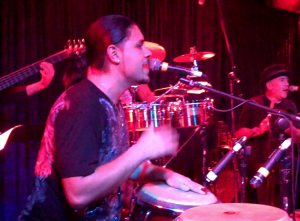The other day I was talking to my friend who plays congas. Since I play salsa, it’s good to understand more about the rhythms of the music so I wanted to learn some basic patterns.
If you’ve never played bongos, congas, etc, you might think that the players just slap the drums.
Not the case.
He showed me a rhythmic pattern and the other thing he showed me was how to get the different tones on congas. That takes a lot of time.
On saxophone, you can have the fingers of Bird, but if your tone is lacking, it will kill the music.
That’s why I have spent a lot of time developing my tone.
Making a single note sound good is a very important step in becoming a good saxophone player and a good musician.
How much time do you spend working on your tone?




I’ve been playing for 30 years. Since year 7 or so (11th grade), I starting working on tone A LOT.
I agree with Neal’s assessment of the importance of tone.
To paraphrase Jim McNeeley: A player’s necessary skills in order of importance are (1) Tone and (2) rhythmic feel. Everything else is extra spice, but without fantastic Tone and Rhythmic Feel, your playing probably won’t command much attention.
Hey Rick,
Thanks for stopping by.
You probably were enlightened about working on tone long before I was then, haha.
I like the emphasis on tone and rhythm in that quote.
-Neal